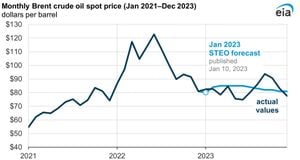Over the next few months, Canada’s iconic Royal Canadian Mounted Police (RCMP) is gearing up for a significant transformation. Thousands of frontline officers are set to don body-worn cameras, marking the beginning of what is poised to be a revolutionary improvement in police accountability and public trust. The decision to implement this program has been on the table since 2020, fuelled by global discussions surrounding police practices following the tragic death of George Floyd. Now, the time has come for action.
Starting on November 18, the RCMP will begin the rollout, aiming to equip approximately 10,000 to 15,000 officers over the next 12 to 18 months. This ambitious plan is largely fueled by the federal government’s investment of $238.5 million to set up the body camera system. This technology, offered through Axon Public Safety Canada Inc., will be maintained under a subscription model, reflecting modern policing trends to leverage technology for greater efficacy.
Each body camera worn by the officers will continuously capture video and audio, with the data uploaded to a secure digital evidence management system meant to uphold integrity and transparency. The mandate is clear: footage must be recorded during all service calls including those responding to crimes, mental health incidents, and crowd control during protests. The cameras will serve as impartial witnesses, capturing the reality of police interactions and bolstering evidence-gathering.
RCMP officials have emphasized the importance of recording to build trust and accountability with the public. “Body-worn video provides increased transparency,” said Taunya Goguen, the project director. “It provides a first-hand view of what officers encounter, oftentimes during intense situations.” Officers are trained to think of their cameras like seatbelts—always on when engaging with the public.
While this technology is already being utilized by various police agencies across Canada, the RCMP’s deployment will be unique due to the national scope and diverse mandates the force covers—from federal operations to provincial and local law enforcement. This expansive reach implies heightened scrutiny over how the cameras are used and how footage is accessed.
To address privacy concerns, the RCMP has outlined strict regulations surrounding when the cameras can be activated. Notably, the devices won’t be used in settings where individuals have high expectations of privacy, such as washrooms and hospitals, or during sensitive procedures like strip searches. This careful management aims to balance transparency and public interest with the protection of personal privacy.
After the initial deployment, RCMP projects to have 50% of its cameras implemented by the spring, eventually reaching the target of 90% by next year. The rollout is expected to involve 1,000 officers transitioning to camera use each month during this period. The cameras have been tested for durability, including function under cold weather conditions, which is important considering Canada’s chilly winters.
Although the RCMP promises greater transparency, there are concerns about how public access to the footage will be managed. While the cameras are expected to be used to create records of interactions, the RCMP has stated footage will only be proactively disclosed when it serves the public interest, raising questions about oversight and potential biases. Christopher Schneider, professor of sociology at Brandon University, expressed apprehension about the control over released footage and suggested immediate access should be granted to individuals who might have been involved in incidents captured. “To allow police officers to review the footage gives them an unjust advantage,” Schneider warned.
Public access to footage is also constrained by Canada’s privacy laws, meaning most recordings may not see the light of day. Interested parties can request video access under the Privacy Act, yet conceding to this process may not sit well with Canadians expecting to see real-time footage following specific incidents involving police.
The RCMP has recognized the potential for public frustration as expectations for transparency may not match the reality of how footage is shared and utilized. Given the rise of readily available footage from U.S. police interactions online, Canadians might anticipate similar levels of openness. Regrettably, RCMP representatives caution against those expectations not aligning with Canadian law and policy.
The RCMP first hinted at its desire to employ body-worn cameras amid widespread protests against police practices back in 2020. The movement gained momentum as citizens increasingly demanded accountability from law enforcement officers across North America, triggering urgent discussions around reform. Although plans were made to launch the cameras as early as 2021, the timeline has experienced several delays due to contract issues and challenges during pilot testing phases. It took time for the Mounties to settle on technology providers and carry out assessments of the devices.
Despite its ambitious plans, the RCMP's rollout is not without competition. Other Canadian cities and police forces, like those of Toronto and Edmonton, are simultaneously developing their plans for similar technology use—albeit at different scales and pace. For example, the Edmonton police department has budgeted $16 million for body cameras and initiated steps to introduce them, reflecting the growing trend across the nation.
All the elements at play suggest this is more than just technology; it's the city’s attempt to forge stronger bonds with its communities. “The rollout of body-worn cameras is another step toward building modern and accountable policing,” said RCMP Commissioner Mike Duheme. “Trust must be earned.” With the vast scale of the rollout and its potential to influence other policing agencies across Canada, citizens are hopeful this initiative will encourage greater accountability, trust, and clarity within their communities.
The coming months will reveal whether this leap toward transparency will meet the public’s high expectations and serve as the precedent for how policing evolves globally.



